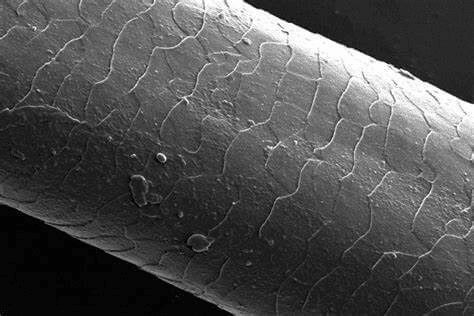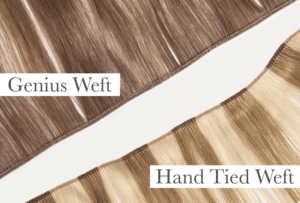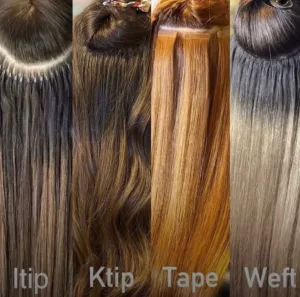Confused by “Remy” on product pages? You are not alone. This one word affets tangling, shine, and service life.
Remy hair means all cuticles point root-to-tip. That alignment lowers friction, keeps strands smooth, and extends wear. I explain definitions, sourcing, quality, Remy vs non-Remy, lifespan, and daily care in clear steps.

Marketing often blurs these terms. I build extensions at the factory each day, so I keep it practical. Use this guide to match material to client expectations, service menus, and margins.
what is remy hair?
Tired of extensions that tangle after a few washes? The core problem is cuticle direction.
Remy hair is human hair with intact cuticles kept in the same direction from root to tip. This alignment limits matting, preserves shine, and improves styling and color results.

The working definition, signs, and quality signals
Remy describes a cuticle condition, not a country or texture. The outer scales line up like roof shingles. When strands rub, scales glide instead of hook. This small detail drives combing force, frizz level in humidity, and tone behavior during color. You can feel it. Pinch a small bundle and slide fingers both ways. True Remy gives more drag going tip-to-root than root-to-tip.
On our line, we preserve direction the moment a ponytail is cut. We band root ends, tag bundles, and keep orientation through washing and color work. We do not flip packets. We do not strip cuticles in harsh acid. We avoid heavy silicone shells that look glossy for a week and then wash off.
Many listings mix “Remy,” “virgin,” and “single-donor.” These are different. Virgin means no chemical color. Single-donor means one person’s hair per pack. Multi-donor Remy is still stable if sorting is tight and direction is kept. For salons, cuticle direction drives daily experience: fewer aftercare complaints, cleaner move-ups, and fewer early replacements.
I also check return hair at weft tops. Short “mustache” lengths can poke. Precise machine settings and newer weft formats (for example, genius wefts) reduce this. Return hair does not cancel Remy status, but neat finishing improves comfort and slip control.
is remy hair human hair?
You may see “Remy synthetic.” That is a red flag.
Remy hair is always human hair. “Remy” refers to human cuticles aligned one way. Synthetic fibers do not have human cuticles, so they cannot be Remy.
Human origin, chemistry, and why wording matters
Human hair is keratin fiber with a cuticle shell and a cortex. Directional scales create directional friction. When aligned, strands slide. When mixed, strands snag. Synthetic fibers like PET or modacrylic lack this natural cuticle geometry and behave differently under heat, water, and color.
Within human categories you will see non-Remy, Remy, and full cuticle single-donor. Non-Remy often comes from floor/brush mixes. Directions are random. Many factories strip the cuticle in acid, then add silicone to fake slip. It feels slick new, but tangles once the coating fades. Remy keeps the natural cuticle and alignment. Full cuticle single-donor goes further: one ponytail per pack, no acid bath, no silicone coat, controlled color. It costs more and lasts longer.
For buyers, simple checks help: wet-strand elasticity, even porosity under toner, and normal “protein” smell and ash on a safe burn test. These quick screens protect your brand and reduce warranty tickets.

where does remy hair come from?
Origin stories sound romantic. Handling decides quality.
Remy hair usually comes from ponytails cut directly from donors, with root-to-tip orientation preserved during every step of processing.
Sourcing, handling, and factory controls
We use directly cut ponytails to lock direction. After cutting, we secure the root ends, tag bundles, and move them as aligned sets through cleanse, tone, and finish. Country names (India, Southeast Asia, Eastern Europe, China) affect natural shade, strand diameter, and natural wave, but not the Remy definition. A supplier can process Indian or European source as Remy if direction is kept honest.
Key controls:
1) Collection: Cut and band ponytails at the source. No floor hair.
2) Sorting: Grade by length and tone without flipping.
3) Color: Buffered processes that keep cuticles intact. No deep acid baths.
4) Construction: Keep orientation during wefting, taping, or keratin tipping.
5) QA: Tip-to-root friction test, wet-comb test, porosity check, and shade match.
Myths to ignore: “Temple hair is always Remy.” Not automatically. Direction can be lost later. “European hair is always better.” Not always. Healthy aligned Indian bundles will outperform a flipped “European” label. Integrity beats geography.
is remy hair good quality?
Clients ask for good hair. Salons ask for predictable hair. Remy checks both when the cuticle is preserved.
Yes, Remy is good quality because aligned cuticles reduce friction and breakage, improve color predictability, and extend usable life under normal heat and styling.
Practical benefits, service performance, and limits
Aligned cuticles give lower static and smoother flow. Brushing from ends upward meets less resistance. Curls set evenly because moisture and porosity are uniform. Professional color lifts more predictably. That matters for balayage on extensions where you need even lift without harsh dry bands.
Remy also installs cleaner. Tapes seal better when strands are not over-coated. Keratin tips grip more consistently when cuticles are intact. Wefts lie flatter when return hair is controlled. Lower friction at the base reduces micro-matting between move-ups.
Limits remain. Remy is still human hair. Hard water loads minerals onto the cuticle, dulls tone, and adds roughness. UV, chlorine, and salt dry the fiber. Over-bleaching roughens scales. In our plant, we select lighter raw stock for light blondes to avoid over-lifting. Salons extend life with sulfate-free wash, light leave-in on mids/ends, heat protectant, and scheduled masks between installs.

remy and non-remy hair—what’s the difference?
Labels decide day-to-day behavior and cost of ownership.
Remy has aligned cuticles. Non-Remy has mixed or removed cuticles with silicone masking. This core difference drives tangling, color results, lifespan, and price.
Side-by-side realities and a fast buyer checklist
| Attribute | Remy Hair | Non-Remy Hair |
|---|---|---|
| Cuticles | Intact and aligned | Mixed or stripped |
| Source | Mostly ponytails | Floor/brush mixes |
| Processing | Light–moderate | Acid bath + silicone common |
| Feel after 10 washes | Still smooth | Coating fades, friction rises |
| Color work | Predictable lift/deposit | Uneven porosity, risky lifts |
| Lifespan | 6–12+ months | 1–3 months |
| Price | Higher, reusable | Lower, frequent replace |
| Best use | Premium, repeat clients | Short projects, tight budgets |

Checks that save you money:
- Friction test: more drag tip-to-root means aligned cuticles.
- Clarify test: if slip disappears after one gentle clarify, silicone was masking damage.
- Heat strand test: human hair styles; plastics bead.
- Documentation: ask for processing notes. Honest suppliers share steps, not buzzwords.
When to choose which:
- Pick Remy for longevity, clean maintenance, and happy reviews.
- Pick non-Remy for short campaigns, fashion shows, or price-sensitive bundles where a 4–12 week window is fine.
How long does Remy hair last?
Clients ask this first. Service menus need steady timelines.
With solid care, Remy hair usually lasts 6–12 months of reuse. Processing level, install method, water quality, heat habits, and care products control the final number.
What controls lifespan, with realistic ranges
Think by tier and by color:
- Standard Remy (medium browns/dark blondes): 3–6 months with moderate processing and average heat.
- Full cuticle single-donor (no acid, no silicone): 9–12+ months when color is controlled and aftercare is steady.
- Very light blondes: start from lighter raw stock to avoid deep lift; expect the high end only with gentle heat and masks.
Install type changes the cycle:
- Tape-ins: re-tape every 6–8 weeks; hair itself can be reused many rounds if adhesive is cleaned well.
- Sewn wefts: 2–4 move-ups before ends thin.
- Keratin tips: base friction shortens life faster in busy, high-heat routines.
Environment matters:
- Hard water: calcium/magnesium films roughen the cuticle and mute tone. Clarify gently every 2–4 weeks, then low-pH mask.
- Heat: keep irons near 170–190°C (338–374°F) with protectant. Higher temps shorten life quickly.
- Pool/surf: rinse, condition, and protect immediately after exposure.

how to care Remy hair daily?
Small habits protect an expensive investment.
Detangle gently, wash with mild formulas, protect from heat, and seal moisture on mids and ends. Keep attachment areas clean and product-light.
Daily, weekly, and visit-based routines that work
Morning and night, use a loop or soft-bristle brush. Hold roots with one hand and brush from ends upward. Separate rows or bonds with fingers to prevent cross-matting. Before sleep, braid loosely or use a silk scrunchie. Sleep on silk to cut friction.
Wash 1–3 times per week as needed. Shampoo the scalp with sulfate-free product; let suds pass through lengths. Rinse well. Apply conditioner mid-shaft to ends only; avoid tapes, beads, and bonds. Mask every 1–2 weeks on ends. Blot dry—do not rub. Use a light leave-in and a pea-size serum on ends.
Heat style with a protectant. Avoid direct iron steam on adhesive or keratin. For pool or sea, pre-wet hair and add a tiny amount of conditioner to ends; rinse after.
At move-ups, request a gentle clarify, tone balance if needed, and a dusting trim. Tight, simple routines keep Remy glossy and easy for months.
My opinion
I judge hair by day 30, not unboxing day. Cuticles that stay intact tell the truth. If budget allows, build your brand on aligned cuticles. Clients will feel the difference each morning.
FAQ
Is Remy the same as virgin?
No. Remy = cuticle direction. Virgin = no chemical color. Hair can be Remy and colored, or virgin but not Remy.
Can Remy hair be bleached?
Yes, but stay conservative. Use lighter raw stock for high-lift blondes, strand test, and support with bond builders and masks.
Which origin is best?
Handling beats origin. Honest collection, gentle processing, and alignment control decide results more than geography.
Why do some “Remy” bundles tangle in two weeks?
Likely flipped during processing or acid-stripped then silicone-coated. After a few washes, the mask fades and friction rises.
Is single-donor worth it?
For luxury brands and color-intense work, yes. Tone uniformity and long wear justify the cost. Multi-donor Remy can still be excellent if sorting is strict.
How should I store unused extensions?
Clean, dry, brushed, and placed in a silk bag. Keep out of sun and heat.
Conclusion
Remy means aligned cuticles and honest performance. Source ponytails, protect direction, avoid harsh acid, and keep care simple. Do this, and extensions stay smooth, style well, and last.
Hibiscus Hair Manufacturer has been dedicated to producing high-quality hair extensions for 25 years and is a recognized leader in the industry. If you are interested in finding a reliable hair extensions supplier and wholesale for your brand, please visit our website for more information:
QUALITY





